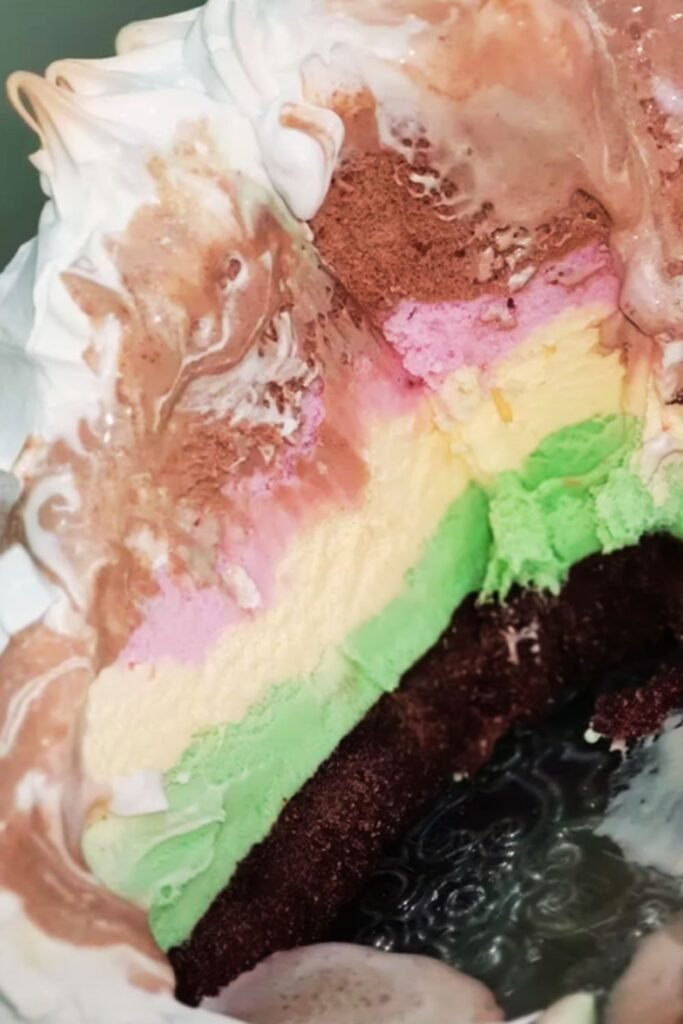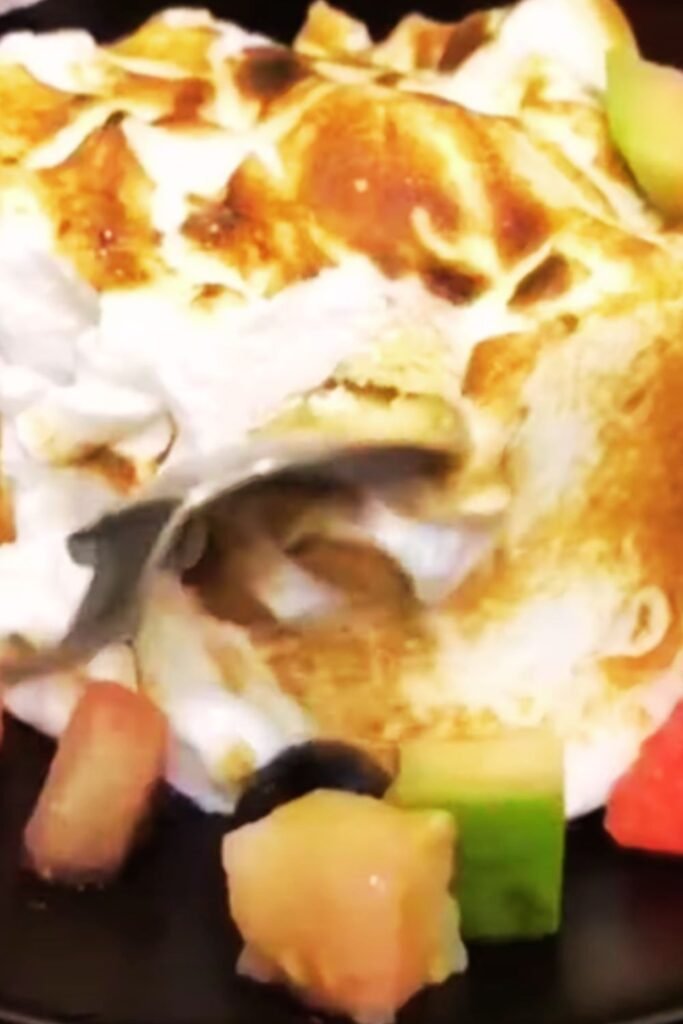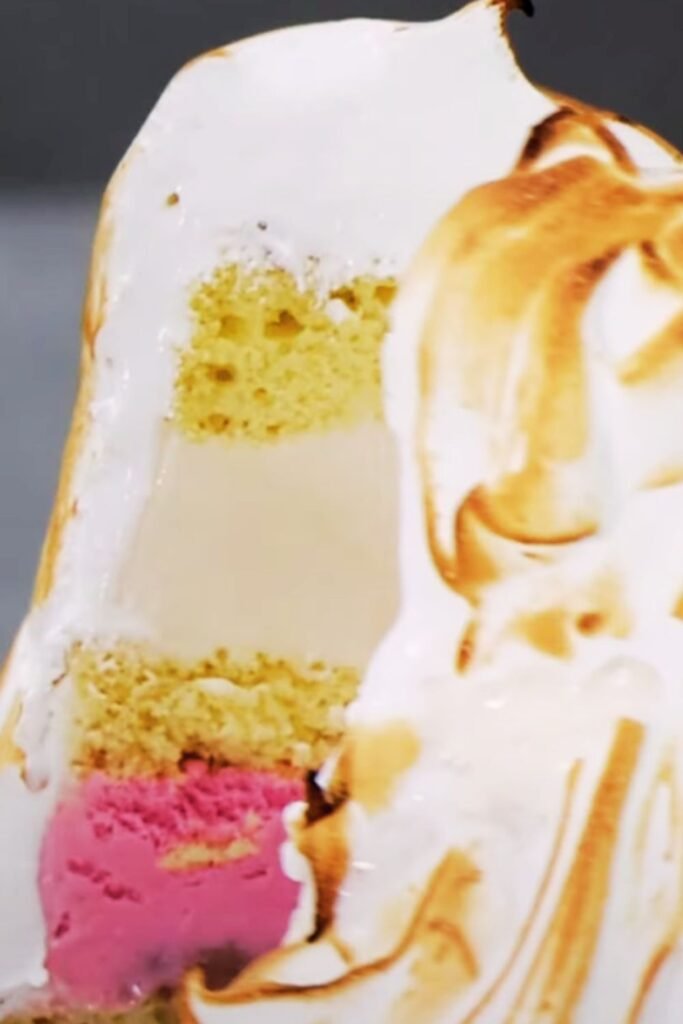I’ve always been fascinated by the intersection of traditional Japanese flavors with classic American baking techniques. When I first discovered matcha crinkle cookies, I knew I had stumbled upon something truly special. These vibrant green treats combine the sophisticated, earthy bitterness of premium matcha powder with the comforting sweetness and distinctive crackled appearance of traditional crinkle cookies.
What makes these cookies so captivating isn’t just their stunning visual appeal – though that bright green color dusted with powdered sugar creates an absolutely gorgeous contrast. It’s the complex flavor profile that develops as you bite into them. The initial sweetness gives way to the grassy, slightly bitter notes of matcha, creating a perfectly balanced treat that’s neither too sweet nor too intense.
My journey with matcha baking began during a trip to Kyoto, where I first experienced authentic matcha in its traditional tea ceremony form. The ceremonial grade matcha I tasted there had such depth and complexity that I became determined to incorporate that same sophistication into my baking. After countless experiments and recipe adjustments, I’ve perfected what I believe is the ultimate matcha crinkle cookie recipe.
Understanding Matcha: The Heart of These Cookies
Matcha : Finely ground powder made from specially grown and processed green tea leaves, primarily from Japan
Ceremonial Grade Matcha : The highest quality matcha, stone-ground and intended for traditional tea ceremonies
Culinary Grade Matcha : A slightly lower grade matcha specifically designed for cooking and baking applications
Umami : The fifth taste sensation, often described as savory or meaty, present in high-quality matcha
The quality of matcha you choose will dramatically impact your cookies’ final flavor and color. I’ve tested this recipe with various grades, and while ceremonial grade produces the most vibrant color and complex flavor, a high-quality culinary grade matcha works beautifully and is more economical for baking purposes.
When selecting matcha, look for powder that’s bright green rather than yellowish or brownish. Fresh matcha should have a sweet, grassy aroma without any fishy or bitter smells. I always store my matcha in the refrigerator in an airtight container to preserve its color and flavor.
Essential Ingredients and Their Roles
The magic of matcha crinkle cookies lies in the careful balance of ingredients. Each component serves a specific purpose in creating that perfect texture and flavor combination.

| Ingredient | Amount | Purpose | Substitution Notes |
|---|---|---|---|
| All-Purpose Flour | 2¼ cups | Provides structure and chewiness | Can substitute up to ½ cup with almond flour |
| Matcha Powder | 3 tablespoons | Primary flavor and color | Use only high-quality culinary or ceremonial grade |
| Unsalted Butter | ½ cup | Adds richness and helps with spreading | Can use vegan butter substitute |
| Vegetable Oil | ¼ cup | Creates tender, chewy texture | Neutral oils work best |
| Brown Sugar | 1 cup packed | Adds moisture and molasses flavor | Light brown sugar preferred |
| Granulated Sugar | ½ cup | Balances flavor and aids in spreading | Essential for proper texture |
| Large Eggs | 2 | Binding agent and structure | Room temperature works best |
| Vanilla Extract | 1 teaspoon | Enhances overall flavor profile | Pure vanilla recommended |
| Baking Powder | 2 teaspoons | Provides lift and crinkle effect | Fresh baking powder crucial |
| Salt | ½ teaspoon | Enhances flavors and balances sweetness | Fine sea salt preferred |
| Powdered Sugar | 1 cup | Creates signature crinkle appearance | For rolling dough balls |
The Science Behind Perfect Crinkle Cookies
Understanding the science behind crinkle cookies has helped me perfect this recipe over the years. The distinctive cracked appearance occurs due to the interaction between the cookie dough’s moisture content and the powdered sugar coating.
When the cookies bake, the dough expands and the outer powdered sugar layer cracks, revealing the vibrant green interior. The combination of both brown sugar and granulated sugar creates the ideal moisture balance – brown sugar keeps the cookies chewy while granulated sugar helps with proper spreading.
The addition of oil alongside butter is crucial. While butter provides flavor, the oil contributes to the tender, chewy texture that makes these cookies so irresistible. I’ve experimented with all-butter versions, but they tend to be more crispy than chewy.
Step-by-Step Baking Process
My technique for these cookies has been refined through countless batches, and I’ve learned that attention to detail during each step makes all the difference.
Preparation Phase:
- Preheat your oven to 350°F (175°C)
- Line baking sheets with parchment paper
- Sift matcha powder to eliminate any lumps
- Bring eggs to room temperature for better incorporation
Mixing the Dough:
- Cream softened butter with both sugars until light and fluffy (about 3-4 minutes)
- Add eggs one at a time, beating well after each addition
- Mix in vanilla extract and oil until fully combined
- In a separate bowl, whisk together flour, sifted matcha, baking powder, and salt
- Gradually add dry ingredients to wet ingredients, mixing just until combined
Shaping and Coating:
- Chill dough for at least 30 minutes (this prevents excessive spreading)
- Roll dough into 1½-inch balls
- Roll each ball generously in powdered sugar
- Place on prepared baking sheets with 2-inch spacing
Baking Process:
- Bake for 10-12 minutes until edges are set but centers still look soft
- Cookies will appear underbaked but will continue cooking on the hot pan
- Cool on baking sheet for 5 minutes before transferring to wire rack

Troubleshooting Common Issues
Through my years of making these cookies, I’ve encountered and solved numerous common problems that home bakers face.
Cookies spreading too much: This usually indicates the dough is too warm or contains too much liquid. Always chill your dough for at least 30 minutes, and ensure your butter isn’t overly soft when mixing.
Pale green color: This typically means you’re using low-quality matcha or not enough of it. Invest in good culinary-grade matcha and don’t be afraid to add an extra tablespoon if you want more intense color and flavor.
Cookies too dry or crumbly: This often results from overbaking or using too much flour. Remember that these cookies should look slightly underbaked when you remove them from the oven.
Insufficient cracking: Make sure you’re rolling the cookies generously in powdered sugar and that your oven temperature is accurate. The thermal shock creates the cracking effect.
Flavor Variations and Creative Additions
While the classic matcha crinkle cookie is perfection in itself, I’ve developed several variations that add interesting dimensions to the basic recipe.
White Chocolate Matcha Crinkles: Fold in ¾ cup of white chocolate chips to the finished dough. The sweetness of white chocolate pairs beautifully with matcha’s earthiness.
Matcha Coconut Crinkles: Add ½ cup of unsweetened shredded coconut and replace vanilla with coconut extract. This creates a tropical twist that’s absolutely divine.
Double Matcha Crinkles: Increase matcha powder to 4 tablespoons and add matcha white chocolate chips for an intensely flavored cookie.
Matcha Almond Crinkles: Replace ½ cup of flour with almond flour and add ½ teaspoon of almond extract. This creates a more complex, nutty flavor profile.
Storage and Freshness Tips
Proper storage is crucial for maintaining these cookies’ texture and flavor. I’ve learned through experience that matcha can be sensitive to light and air exposure.
Short-term storage (up to 1 week): Store in an airtight container at room temperature with parchment paper between layers to prevent sticking.
Long-term storage (up to 3 months): Freeze baked cookies in freezer-safe containers with parchment paper layers. Thaw at room temperature for best texture.
Dough storage: Raw cookie dough can be refrigerated for up to 3 days or frozen for up to 3 months. If freezing, shape into balls first, then freeze on a tray before transferring to containers.

Nutritional Information and Dietary Considerations
Understanding the nutritional profile of these cookies helps me make informed decisions about portion sizes and ingredient modifications.
| Nutrient | Per Cookie (24 cookies total) | Daily Value % |
|---|---|---|
| Calories | 185 | 9% |
| Total Fat | 7g | 11% |
| Saturated Fat | 3g | 15% |
| Cholesterol | 25mg | 8% |
| Sodium | 95mg | 4% |
| Total Carbohydrates | 28g | 10% |
| Dietary Fiber | 1g | 4% |
| Sugars | 18g | – |
| Protein | 3g | 6% |
| Antioxidants | High | – |
| Caffeine | 12mg | – |
Dietary Modifications:
Gluten-Free Version: Replace all-purpose flour with a 1:1 gluten-free flour blend. I recommend adding ¼ teaspoon of xanthan gum if your blend doesn’t include it.
Vegan Version: Substitute eggs with flax eggs (2 tablespoons ground flaxseed mixed with 6 tablespoons water) and use vegan butter. The texture will be slightly different but still delicious.
Reduced Sugar Version: You can reduce the granulated sugar by up to ¼ cup, though this will affect the spreading and texture slightly.
Serving Suggestions and Pairings
These matcha crinkle cookies shine in various serving contexts, and I’ve discovered several pairings that enhance their unique flavor profile.
Traditional Tea Service: Serve alongside hot green tea or matcha latte for an authentic Japanese-inspired experience. The cookies’ sweetness balances the tea’s astringency perfectly.
Ice Cream Sandwiches: Use two cookies to sandwich vanilla or green tea ice cream. The contrast between the cool, creamy ice cream and the chewy, earthy cookies is remarkable.
Gift Presentation: Package in clear cellophane bags tied with ribbon for beautiful, homemade gifts. The vibrant green color makes them particularly striking for spring celebrations or Asian-themed events.
Dessert Platters: Include alongside other matcha desserts like matcha macarons, white chocolate truffles, or fresh fruit for an elegant dessert spread.
The Cultural Significance of Matcha in Modern Baking
My exploration of matcha baking has taught me about the beautiful fusion of traditional Japanese tea culture with contemporary Western dessert techniques. Matcha has been central to Japanese tea ceremonies for over 400 years, representing mindfulness, respect, and the appreciation of subtle flavors.
When I incorporate matcha into these crinkle cookies, I’m participating in a modern culinary movement that honors traditional ingredients while creating something entirely new. This fusion represents the best of both worlds – the sophisticated flavor profile of ceremonial matcha with the comforting familiarity of American-style cookies.
Professional Tips for Perfect Results
After making hundreds of batches of these cookies, I’ve developed several professional techniques that ensure consistent, bakery-quality results.
Temperature Control: Use an oven thermometer to verify your oven’s accuracy. Many home ovens run hot or cold, which significantly affects baking times and results.
Ingredient Quality: Invest in high-quality matcha powder – it’s the star ingredient and worth the expense. Store it properly in the refrigerator to maintain its vibrant color and complex flavor.
Timing is Everything: Don’t overbake these cookies. They should look slightly underdone when you remove them from the oven. The residual heat will finish the cooking process.
Consistency Matters: Use a cookie scoop to ensure uniform sizes. This guarantees even baking and professional appearance.
Sifting is Crucial: Always sift your matcha powder to prevent lumps in the finished cookies. Matcha can clump easily, especially if it’s been stored for a while.
Questions and Answers
Q. Can I use matcha tea bags instead of powder for this recipe?
No, matcha tea bags contain broken tea leaves rather than the fine powder needed for baking. You need actual matcha powder, which is stone-ground whole tea leaves. The texture and flavor concentration are completely different, and tea bags won’t provide the color or taste you’re looking for in these cookies.
Q. Why do my matcha crinkle cookies turn out more yellow than green?
This usually indicates you’re using low-quality or old matcha powder. Fresh, high-quality matcha should be vibrant green. If your matcha has turned yellowish or brownish, it’s likely oxidized and past its prime. I recommend investing in culinary-grade matcha from a reputable supplier and storing it in the refrigerator.
Q. How can I make my cookies more or less sweet?
To reduce sweetness, you can decrease the granulated sugar by up to ¼ cup, though this may affect the cookies’ spreading and texture. For sweeter cookies, add an extra 2-3 tablespoons of granulated sugar. Keep in mind that matcha has natural bitterness, so some sweetness is necessary for balance.
Q. Can I make the dough ahead of time?
Absolutely! The cookie dough actually benefits from resting in the refrigerator for several hours or overnight. This allows the matcha flavor to develop and makes the dough easier to handle. You can refrigerate shaped dough balls for up to 3 days or freeze them for up to 3 months.
Q. What’s the difference between ceremonial and culinary grade matcha for baking?
Ceremonial grade matcha is the highest quality, intended for traditional tea preparation. It has the most vibrant color and complex flavor but is quite expensive. Culinary grade matcha is specifically designed for cooking and baking – it’s more affordable while still providing excellent flavor and color for these cookies.
Q. My cookies didn’t crack properly. What went wrong?
Poor cracking usually results from insufficient powdered sugar coating, incorrect oven temperature, or dough that’s too cold. Make sure you roll each cookie ball generously in powdered sugar, verify your oven temperature with a thermometer, and let chilled dough sit at room temperature for 10-15 minutes before baking.
Q. How do I know when the cookies are properly baked?
Matcha crinkle cookies should look slightly underbaked when you remove them from the oven. The edges should be set but the centers should still appear soft and slightly shiny. They’ll continue cooking on the hot baking sheet. Overbaked cookies will be dry and lose their chewy texture.
Q. Can I substitute the butter with oil completely?
While you could technically do this, I don’t recommend it. The combination of butter and oil creates the ideal texture – butter provides flavor while oil contributes to the chewy consistency. Using only oil would result in cookies that are too tender and lack the rich flavor that butter provides.
These matcha crinkle cookies represent everything I love about fusion baking – they honor traditional flavors while embracing modern techniques. The vibrant green color never fails to impress, but it’s the complex, balanced flavor that keeps people coming back for more. Whether you’re new to matcha or a longtime enthusiast, these cookies offer the perfect introduction to this sophisticated ingredient in a familiar, comforting format.
The key to success lies in using quality ingredients, particularly the matcha powder, and paying attention to the details that make the difference between good cookies and exceptional ones. Take your time with each step, and don’t be afraid to adjust the matcha quantity to suit your taste preferences. Remember, baking is both science and art – understanding the principles gives you the foundation, but your personal touch makes each batch uniquely yours.